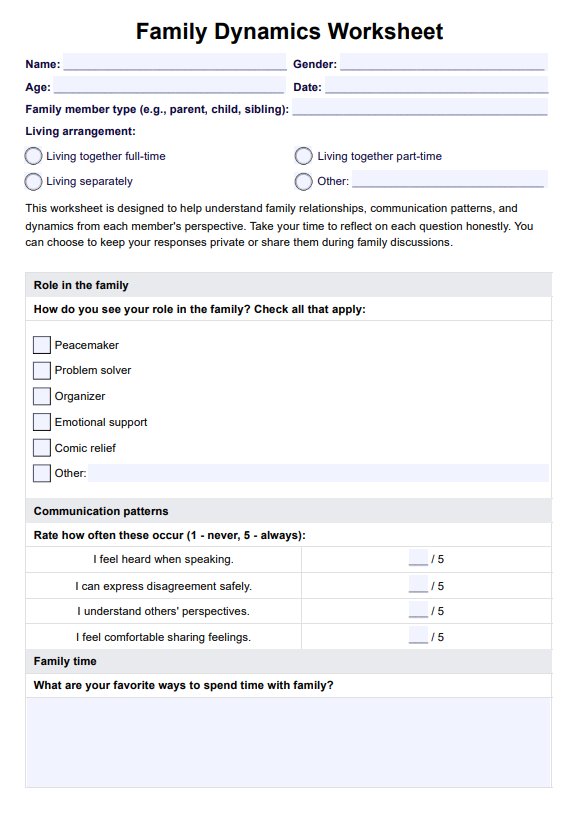Families, therapists, and counselors use family dynamics worksheets to promote positive communication and understanding within their households.

Family Dynamics Worksheet PDF
Download our Family Dynamics Worksheet PDF as a helpful exploratory and discovery tool in your family therapy sessions.
Use Template
Family Dynamics Worksheet PDF Template
Commonly asked questions
Use these to strengthen family bonds, navigate conflicts, or better understand each family member's role and perspective.
A family therapist should be consulted when challenges persist, communication breaks down, or when you're seeking professional guidance to foster a happier and healthier family dynamic. You can also do the family dynamics worksheet with the therapist's advice to maximize its effectiveness.
EHR and practice management software
Get started for free
*No credit card required
Free
$0/usd
Unlimited clients
Telehealth
1GB of storage
Client portal text
Automated billing and online payments











